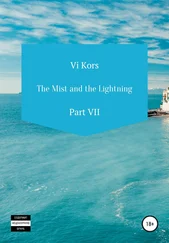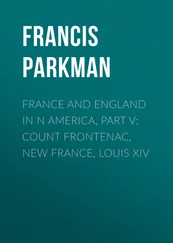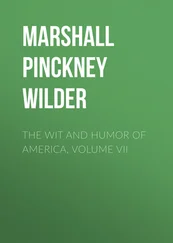Francis Parkman - France and England in N America, Part VII, Vol 1 - A Half-Century of Conflict
Здесь есть возможность читать онлайн «Francis Parkman - France and England in N America, Part VII, Vol 1 - A Half-Century of Conflict» — ознакомительный отрывок электронной книги совершенно бесплатно, а после прочтения отрывка купить полную версию. В некоторых случаях можно слушать аудио, скачать через торрент в формате fb2 и присутствует краткое содержание. Жанр: foreign_prose, История, foreign_edu, foreign_antique, на английском языке. Описание произведения, (предисловие) а так же отзывы посетителей доступны на портале библиотеки ЛибКат.
- Название:France and England in N America, Part VII, Vol 1: A Half-Century of Conflict
- Автор:
- Жанр:
- Год:неизвестен
- ISBN:нет данных
- Рейтинг книги:3 / 5. Голосов: 1
-
Избранное:Добавить в избранное
- Отзывы:
-
Ваша оценка:
- 60
- 1
- 2
- 3
- 4
- 5
France and England in N America, Part VII, Vol 1: A Half-Century of Conflict: краткое содержание, описание и аннотация
Предлагаем к чтению аннотацию, описание, краткое содержание или предисловие (зависит от того, что написал сам автор книги «France and England in N America, Part VII, Vol 1: A Half-Century of Conflict»). Если вы не нашли необходимую информацию о книге — напишите в комментариях, мы постараемся отыскать её.
France and England in N America, Part VII, Vol 1: A Half-Century of Conflict — читать онлайн ознакомительный отрывок
Ниже представлен текст книги, разбитый по страницам. Система сохранения места последней прочитанной страницы, позволяет с удобством читать онлайн бесплатно книгу «France and England in N America, Part VII, Vol 1: A Half-Century of Conflict», без необходимости каждый раз заново искать на чём Вы остановились. Поставьте закладку, и сможете в любой момент перейти на страницу, на которой закончили чтение.
Интервал:
Закладка:
Among the essential features of his plan was a well-garrisoned fort, and a church, served not by Jesuits alone, but also by Récollet friars and priests of the Missions Étrangères. The idea of this ecclesiastical partnership was odious to the Jesuits, who felt that the west was their proper field, and that only they had a right there. Another part of Cadillac's proposal pleased them no better. This was his plan of civilizing the Indians and teaching them to speak French; for it was the reproach of the Jesuit missions that they left the savage a savage still, and asked little of him but the practice of certain rites and the passive acceptance of dogmas to him incomprehensible.
"It is essential," says the memorial, "that in this matter of teaching the Indians our language the missionaries should act in good faith, and that his Majesty should have the goodness to impose his strictest orders upon them; for which there are several good reasons. The first and most stringent is that when members of religious orders or other ecclesiastics undertake anything, they never let it go. The second is that by not teaching French to the Indians they make themselves necessary [as interpreters] to the King and the governor. The third is that if all Indians spoke French, all kinds of ecclesiastics would be able to instruct them. This might cause them [the Jesuits] to lose some of the presents they get; for though these Reverend Fathers come here only for the glory of God, yet the one thing does not prevent the other,"—meaning that God and Mammon may be served at once. "Nobody can deny that the priests own three quarters of Canada. From St. Paul's Bay to Quebec, there is nothing but the seigniory of Beauport that belongs to a private person. All the rest, which is the best part, belongs to the Jesuits or other ecclesiastics. The Upper Town of Quebec is composed of six or seven superb palaces belonging to Hospital Nuns, Ursulines, Jesuits, Récollets, Seminary priests, and the bishop. There may be some forty private houses, and even these pay rent to the ecclesiastics, which shows that the one thing does not prevent the other ." From this it will be seen that, in the words of one of his enemies, Cadillac "was not quite in the odor of sanctity."
"One may as well knock one's head against a wall," concludes the memorial, "as hope to convert the Indians in any other way [than that of civilizing them]; for thus far all the fruits of the missions consist in the baptism of infants who die before reaching the age of reason." 25 25 Mémoire adressé au Comte de Maurepas , in Margry, v. 138.
This was not literally true, though the results of the Jesuit missions in the west had been meagre and transient to a surprising degree.
Cadillac's plan of a settlement at Detroit was not at first received with favor by Callières, the governor; while the intendant Champigny, a fast friend of the Jesuits, strongly opposed it. By their order the chief inhabitants of Quebec met at the Château St. Louis,—Callières, Champigny, and Cadillac himself being present. There was a heated debate on the beaver-trade, after which the intendant commanded silence, explained the projects of Cadillac, and proceeded to oppose them. His first point was that the natives should not be taught French, because the Indian girls brought up at the Ursuline Convent led looser lives than the young squaws who had received no instruction, while it was much the same with the boys brought up at the Seminary.
"M. de Champigny," returned the sarcastic Cadillac, "does great honor to the Ursulines and the Seminary. It is true that some Indian women who have learned our language have lived viciously; but that is because their teachers were too stiff with them, and tried to make them nuns." 26 26 La Mothe-Cadillac, Rapport au Ministre , 1700, in Margry, v. 157.
Champigny's position, as stated by his adversary, was that "all intimacy of the Indians with the French is dangerous and corrupting to their morals," and that their only safety lies in keeping them at a distance from the settlements. This was the view of the Jesuits, and there is much to be said in its favor; but it remains not the less true that conversion must go hand in hand with civilization, or it is a failure and a fraud.
Cadillac was not satisfied with the results of the meeting at the Château St. Louis, and he wrote to the minister: "You can never hope that this business will succeed if it is discussed here on the spot. Canada is a country of cabals and intrigues, and it is impossible to reconcile so many different interests." 27 27 Rapport au Ministre , 1700.
He sailed for France, apparently in the autumn of 1699, to urge his scheme at court. Here he had an interview with the colonial minister, Ponchartrain, to whom he represented the military and political expediency of his proposed establishment; 28 28 Cadillac's report of this interview is given in Sheldon, Early History of Michigan , 85-91.
and in a letter which seems to be addressed to La Touche, chief clerk in the Department of Marine and Colonies, he promised that the execution of his plan would insure the safety of Canada and the ruin of the British colonies. 29 29 La Mothe-Cadillac à un premier commis, 18 Octobre, 1700 , in Margry, v. 166.
He asked for fifty soldiers and fifty Canadians to begin the work, to be followed in the next year by twenty or thirty families and by two hundred picked men of various trades, sent out at the King's charge, along with priests of several communities, and nuns to attend the sick and teach the Indian girls. "I cannot tell you," continues Cadillac, "the efforts my enemies have made to deprive me of the honor of executing my project; but so soon as M. de Ponchartrain decides in its favor, the whole country will applaud it."
Ponchartrain accepted the plan, and Cadillac returned to Canada commissioned to execute it. Early in June, 1701, he left La Chine with a hundred men in twenty-five canoes loaded with provisions, goods, munitions, and tools. He was accompanied by Alphonse de Tonty, brother of Henri de Tonty, the companion of La Salle, and by two half-pay lieutenants, Dugué and Chacornacle, together with a Jesuit and a Récollet. 30 30 Callières au Ministre, 4 Octobre, 1701. Autre lettre du même, sans date , in Margry, v. 187, 190.
Following the difficult route of the Ottawa and Lake Huron, they reached their destination on the twenty-fourth of July, and built a picket fort sixty yards square, which by order of the governor they named Fort Ponchartrain. 31 31 Callières et Champigny au Ministre, sans date.
It stood near the west bank of the strait, about forty paces from the water. 32 32 Relation du Destroit (by the Jesuit who accompanied the expedition).
Thus was planted the germ of the city of Detroit.
Cadillac sent back Chacornacle with the report of what he had done, and a description of the country written in a strain of swelling and gushing rhetoric in singular contrast with his usual sarcastic utterances. "None but enemies of the truth," his letter concludes, "are enemies of this establishment, so necessary to the glory of the King, the progress of religion, and the destruction of the throne of Baal." 33 33 Description de la Rivière du Détroit, jointe à la lettre de MM. de Callières et de Champigny, 8 Octobre, 1701.
What he had, perhaps, still more at heart was making money out of it by the fur-trade. By command of the King a radical change had lately been made in this chief commerce of Canada, and the entire control of it had been placed in the hands of a company in which all Canadians might take shares. But as the risks were great and the conditions ill-defined, the number of subscribers was not much above one hundred and fifty; and the rest of the colony found themselves shut out from the trade,—to the ruin of some, and the injury of all. 34 34 Callières au Ministre, 9 Novembre, 1700.
Интервал:
Закладка:
Похожие книги на «France and England in N America, Part VII, Vol 1: A Half-Century of Conflict»
Представляем Вашему вниманию похожие книги на «France and England in N America, Part VII, Vol 1: A Half-Century of Conflict» списком для выбора. Мы отобрали схожую по названию и смыслу литературу в надежде предоставить читателям больше вариантов отыскать новые, интересные, ещё непрочитанные произведения.
Обсуждение, отзывы о книге «France and England in N America, Part VII, Vol 1: A Half-Century of Conflict» и просто собственные мнения читателей. Оставьте ваши комментарии, напишите, что Вы думаете о произведении, его смысле или главных героях. Укажите что конкретно понравилось, а что нет, и почему Вы так считаете.












